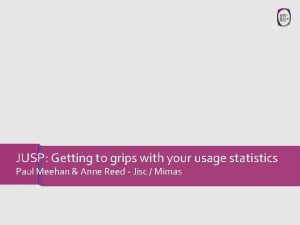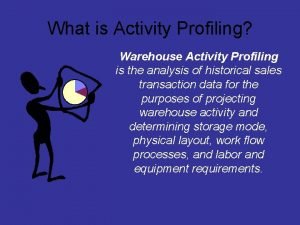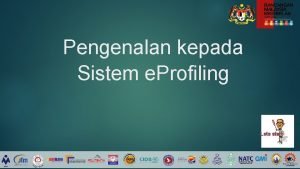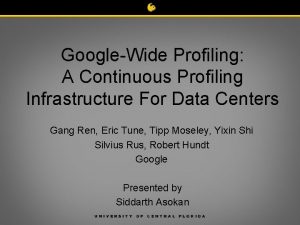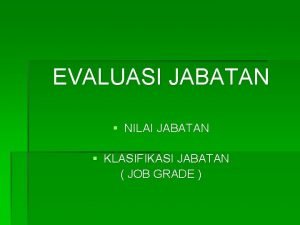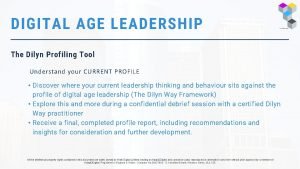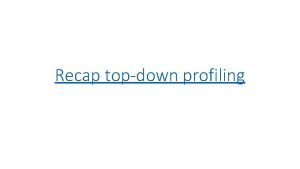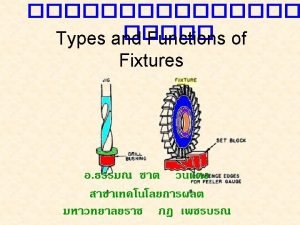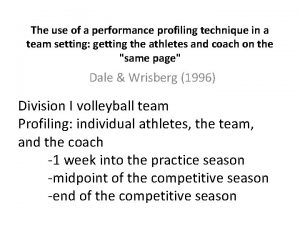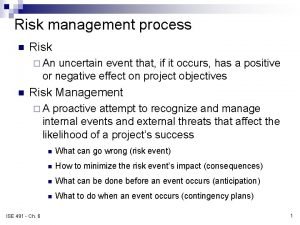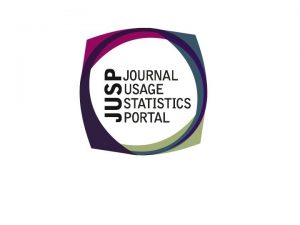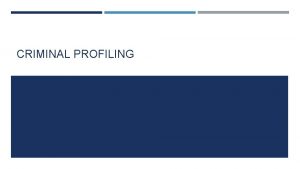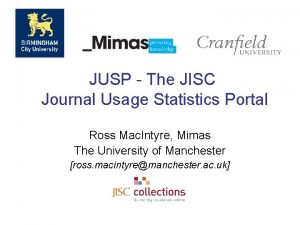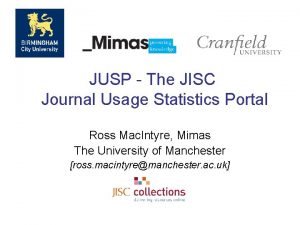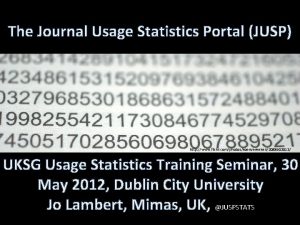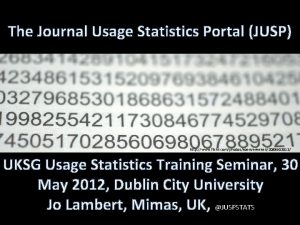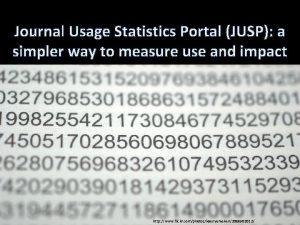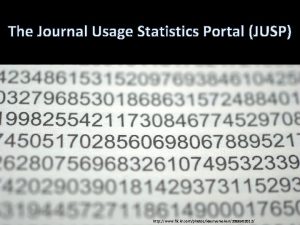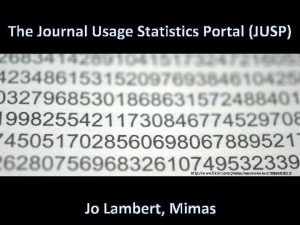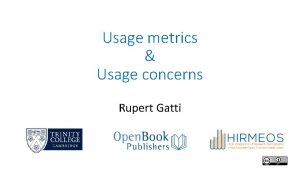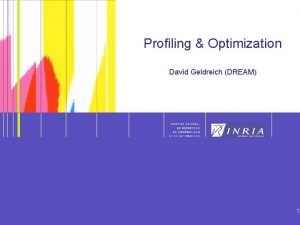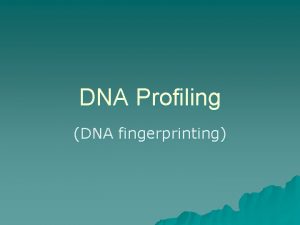Usage profiling in JUSP Understanding your usage in

























- Slides: 25

Usage profiling in JUSP Understanding your usage in a broader context

Usage profiling in JUSP What is usage profiling? » A comparison of your usage from a selected publisher with average usage of that publisher by other libraries in the same Jisc band, region and group(s) » Two different reports: › Calendar year › Academic year (which includes FTE information) » Available for an increasing number of publishers participating in JUSP 03/02/15 2

Usage profiling in JUSP Things to bear in mind » The libraries you are compared with may not take the same deal as you » Some libraries may only have subscribed titles with that publisher » Some libraries may not use a particular publisher » The report provides averages and you cannot see institutionspecific data for any other institution » Not all JUSP publishers have agreed to usage profiling 03/02/15 3

Usage profiling in JUSP How to run the reports Calendar year Academic year 03/02/15 4

Usage profiling in JUSP Calendar year report 03/02/15 5

Usage profiling in JUSP Academic year report 03/02/15 6

Usage profiling in JUSP What can you do with the data? » Compare your usage with averages for institutions of similar type that have deals or subscribed titles with the selected publisher » Provide a context for what constitutes "good usage" by comparing your own figures with averages for other similar institutions » Promote evidence of higher than average usage within your institution » Seek reasons for lower than average usage 03/02/15 7

Usage profiling in JUSP What can you do with the data? » Using the academic year report, see how your usage per FTE compares with the average » See how your FTE numbers compare with the average and whether this may affect usage that is higher or lower than average » Use in conjunction with other evidence (e. g. from the SCONUL annual statistics) to see how well resources are being used within your institution in relation to total spend and other factors 03/02/15 8

Usage profiling in JUSP What can you do with the data? » Compare current data with previous years to see if usage patterns have changed in relation to the averages » Download as a CSV file to do your own more detailed analysis in Excel 03/02/15 9

Usage profiling at Plymouth University Jason Harper

JUSP Usage Profiling Demonstrating successes and business needs at Plymouth University

An Intermittent JUSP User • Have used JUSP on and off since 2012, to… – Track trends, compile SCONUL returns, inform decisions about renewals, or about changes to core titles in bundle deals • By no means an expert… • JUSP User Community are contributing the benefit of experience and expertise – Useful templates – Guides and training – See the Community Area within the JUSP portal

JISC and JUSP – Community Solutions • • JUSP is now a well established service, and a good example of the work that JISC is doing to produce shared services that can benefit the whole HEI community Reducing duplication of processes, effort and inefficient use of resource across institutions Providing platforms and technical solutions for institutions that don’t have the resource to develop or implement them locally Other beneficial initiatives include: – KB+ – The JISC Monitor project – The Safe. Net Proposal

JUSP and RAPTOR • Have watched the release of ever more helpful JUSP reports and functionality, e. g. – SCONUL returns – Marking of core titles in bundle deals • Used the RAPTOR tool to compare usage (shibboleth or EZP accesses) of resources between faculties/departments • All of this looking at usage within the institution

Usage Profiling • The JUSP Usage Profiling reports now enable me to make comparisons between – usage at my institution, and – average usage for a portion of the HEI sector • Can zoom out and see: – what our usage is compared with the SCONUL average, the average for our band or grouping, or others in our region – whether we have higher or lower than average usage for certain resources • CAVEAT: can’t choose which portions of the sector you want to benchmark yourself against (aspirational)

Scenario 1: Sharing success • Presentation to senior TIS management about use of Library electronic resources • Context: recent publication of HEI spends with major publishers (FOI requests); JISC band 5 a • Looked at overall usage of key publishers – PU downloads compared to different sector averages • Demonstrating that PU usage justifies the costs; and that our users are engaging with online resources

Publisher Profiling 2013 -14 100% Post 1992 (average FTE 12, 758) 90% 80% 70% 60% JISC Band 5 a (average FTE 18, 420) SCONUL (average FTE 13, 814) 50% 40% 30% 20% 10% 0% Elsevier OUP Wiley

Scenario 2: Business decision-making • Discovery tool in place since 2011 • Established Open Athens authentication architecture – Not implemented to handle IP • DLE project implemented SSO/Shibboleth – no wish to maintain this alongside “similar” OA – But: • not all platforms served by shibboleth • still no IP authentication solution to provide off-campus access

Scenario 2: Business decision-making • Aims – Improve access to electronic resources – Improve user experience (same on and off-campus) – Maximise ROI for discovery system investment, and investment in electronic materials • Submit business case for hosted EZProxy solution (acting as an SP to our shibboleth Id. P) – Subscription costs for HEZP – “Buy-in” – Technical support if necessary • Slightly different target audience…

Scenario 2: Business decision-making • We knew that users were experiencing difficulties accessing resources (particularly off-campus – where the lack of a proxy IP solution was very apparent) – Evidence from NSS and internal user survey comments – Enquiries and issue reporting • Decided to use a different measure (average number of downloads per FTE) – Applied to same basket of resources – To demonstrate where there were downward access trends (despite discovery solution) – Where usage was below SCONUL average (reflecting a spread of institutions with good authentication architecture) – Or where further value/ROI could be gained from already well-used resources

Benchmarking Demonstrate where PU usage is below average for sector/band Or potential to extract more value from resources… 12 35 Wiley usage 10 8 Plymouth University (FTE 25, 494) 6 SCONUL (average FTE 13, 814) 4 JISC Band 5 a (average FTE 18, 420) 2 0 2011 -12 2012 -13 2013 -14 Elsevier usage 30 25 Plymouth University (FTE 25, 494) 20 SCONUL (average FTE 13, 814) 15 10 JISC Band 5 a (average FTE 18, 420) 5 0 2011 -12 2012 -13 2013 -14

JUSP Usage Profiling Wishlist • • e. Book profiling reports APC/Gold profiling (crossover with JISC Monitor? ) Ability to run combination reports (against a selection of publishers) Ability to run trend reports (across a number of years) Ability to deselect non relevant comparators from the results More report export/output options (what I would really like – but isn’t allowable) … ability to compare against selected institutions (with similar FTE, teaching profile, library systems infrastructure, etc. ), or an aspirational group (Russell or the old 1994 Group)

Usage profiling in JUSP Other JUSP libraries » University of Sussex “Comparisons and trends are the two things that are most interesting with the usage profiling report… it’s nice to not be doing it in a vacuum” “We were looking at the year on year comparison of usage, and it was interesting to find unexpected trends. We intend to look at the usage profiling reports to see if this is a national trend or if it is something specific to our institution that warrants further investigation” 03/02/15 23

Usage profiling in JUSP Other JUSP libraries » Library Services, Open University “We’ve always been interested to know how our use compares with others in our Jisc Band for example to benchmark how our students and staff use the resources compared with other institutions in the same band” “What’s been great this year… has helped to show patterns across many different publishers, not just the five or so that were there originally” 03/02/15 24

Further information JUSP http: //jusp. mimas. ac. uk jusp@mimas. ac. uk JUSP usage profiling resources http: //bit. ly/usageprofiling
 Jusp
Jusp Warehouse profiling
Warehouse profiling My limitation as a student
My limitation as a student Spokesperson profiling
Spokesperson profiling E profiling
E profiling Typological profiling
Typological profiling Partner profiling
Partner profiling Continuous profiling
Continuous profiling Nilai jabatan adalah
Nilai jabatan adalah Leadership profiling tools
Leadership profiling tools James russell odom
James russell odom Gather counselling
Gather counselling Job profiling process
Job profiling process Ase profile
Ase profile Youtube.com
Youtube.com Top down profiling
Top down profiling Qnx cpu usage
Qnx cpu usage Performance profiling wheel
Performance profiling wheel Classification of fixtures
Classification of fixtures Character profiling
Character profiling Performance profiling techniques
Performance profiling techniques Column profiling
Column profiling Rna
Rna Farmer profiling
Farmer profiling Risk event life cycle
Risk event life cycle Sku profiling
Sku profiling
